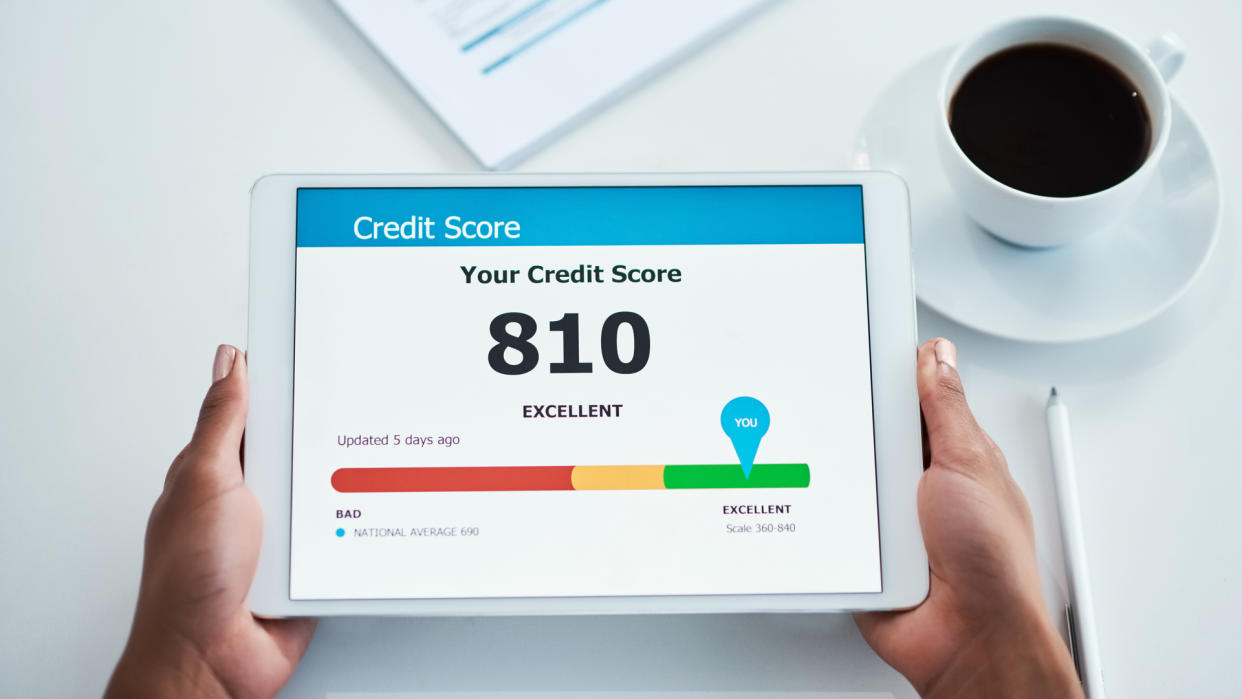4 Ways To Get Your Highest Credit Score Possible

Increasing your credit score can have many benefits, including lower rates on credit cards and financing, higher credit limits and better insurance rates. The better your credit score, the better things will be for you in each of these areas.
Find Out: Why Stealth Wealth Is the Best Way To Handle Your Money
Read: 3 Signs You’re Serious About Raising Your Credit Score
Thus, you might wonder how you can achieve the highest credit score possible. Some say that a perfect score of 850 isn’t necessary. That said, aiming for a credit score of very good (740 to 799) to excellent (800+) will typically give you access to the best rates and financing options. If you want those benefits (not to mention bragging rights), we’ll cover the steps to get your highest credit score possible.
Know Your Credit Score
There’s an old expression that goes something like this: “Know thy enemy and know yourself and you will win a hundred battles.” If the enemy is a low credit score, you must know your credit score before you can start improving it. You can start by checking it with each of the three credit bureaus (Experian, TransUnion and Equifax). You can request one credit report from each bureau for free once per year.
If you want to check your credit score more often, there are services like Chase Credit Journey and CreditWise from Capital One. Scores are updated weekly and neither requires you to be a customer. These services typically provide a credit score rating, but 670 and above is generally considered good, while above 800 is excellent.
Stimulus Update: New Proposal Could Give Americans Monthly $1,200 Checks
Understand What Impacts Your Credit Score
The next step to improving your credit score is understanding the factors that affect it. These factors are:
Payment history (35%): This is the biggest factor that affects your credit score. A healthy payment history means you make your payments on time and don’t miss payments. It also means you haven’t declared bankruptcy in the past several years.
Credit utilization (30%): This is the ratio of the credit you are currently compared to your total available credit. For example, if you have four accounts with a total limit of $10,000 and you have a total of $2,000 of outstanding credit, your utilization is 20%.
Length of credit history (15%): Refers to the average age of your credit accounts. Generally, the longer your credit history, the better.
Credit mix (10%): A diverse mix of credit accounts (e.g., credit cards, loans and mortgages) can help boost your credit score.
New credit (10%): Opening too many accounts too quickly can negatively affect your credit score. However, the impact will usually fade after a while if you stop opening new accounts.
Focusing on these credit factors will help you improve your credit score. Generally, making your payments on time and not using too much of your available credit.
Create a Plan To Pay Off Debt
If you are like most Americans, you might have a significant amount of debt, which is likely dragging down your credit score. Paying off your debt is thus crucial to improving your credit score. That’s especially true if your utilization is high, and you are sometimes late with payments or miss them entirely.
If that is the case, you should first identify all of your debts, including the lender, interest rate, balance and minimum. Next, you should prioritize your debt. Paying off those with the highest interest rate first is generally best.
However, some prefer to pay off the smallest balances first (known as the debt snowball). If you prefer the debt snowball, don’t worry — staying committed to your debt payoff strategy is the most important thing. If you fall off the bandwagon next month, it won’t matter if you chose the “best” strategy.
But you should get specific with your debt payoff goals. For instance, you might decide to pay off a specific amount of debt or pay it off in a given timeframe. Either way, the key is to create a budget to help you achieve your goal and stick to the plan.
Monitor Your Credit Report
Once you have created a plan to pay off your debt, make sure you keep your utilization low and continue to pay on time. Once you have addressed all these factors, monitoring your credit report is next. There are several options for monitoring your credit report, including AnnualCreditReport.com and Chase Credit Journey.
Once you have your credit report, carefully review it for incorrect information or fraudulent activity. Also, ensure that all of your account information is accurate and that there are no late payments or collections you don’t recognize.
If you see any errors, dispute them with the credit bureau with the wrong information. You can do this online or by mail, after which the credit bureau has 30 days to investigate the issue and make the necessary corrections.
You can also set up credit monitoring alerts that will notify you of any changes or suspicious activity on your credit report. Many credit cards include this kind of service, but you can sign up for additional credit monitoring services. These might be free but do have a subscription fee in some cases.
Bottom Line
Improving your credit score can seem difficult, but it doesn’t have to be that way. Just know that maintaining a perfect credit score isn’t realistic, and it may not provide noticeable benefits. However, following the steps outlined here will help you improve your credit and help you achieve the best credit score possible.
More From GOBankingRates
This article originally appeared on GOBankingRates.com: 4 Ways To Get Your Highest Credit Score Possible
